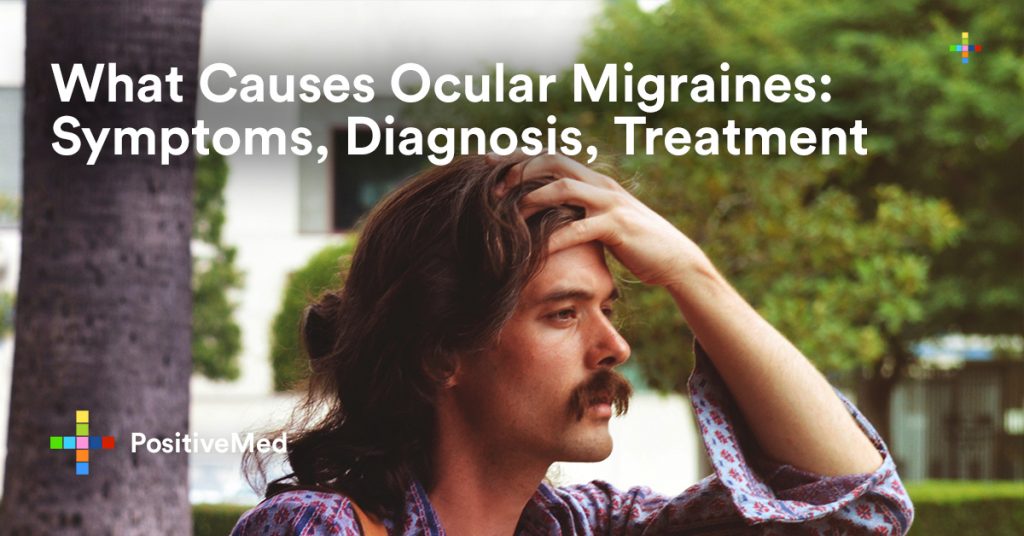Ocular migraines are rare conditions that approximately affect about 1 per 200 individuals who suffer from migraine headaches. It is also referred to as an aura migraine, ophthalmic migraine, or a retinal migraine. This condition leads to vision loss or blindness in one eye for a short period (usually for less than an hour). Normally, retinal migraines don’t trigger any damage and are not indicators of a major problem. However, there may be some risk of retinal damage due to reduced flow of blood. It is therefore advisable to go for a medical checkup if you experience these types of migraines.

Causes of an Ocular Migraine
A sudden narrowing or constriction of blood vessels near the eye can significantly reduce the flow of blood to the organ. This can happen due to nerve cell changes in the retina. Symptoms of ocular migraines fade when these changes get resolved and the blood flow returns to normal.
Researchers believe that an aura migraine occurs due to a wave of transient changes in the activity of certain brain nerve cells. Potential triggers of aura migraines include:
Smoking or tobacco use
Intense or strenuous exercise activity
Hypertension (high blood pressure)
Dehydration
Low blood sugar levels
Hot climates and high altitudes
Use of hormonal medications, birth control pills, or hormone replacement therapy
Withdrawal from substances like caffeine
Processed foods containing nitrates
Beverages or drinks containing caffeine or alcohol
Inadequate sleep
Anxiety or stress
Exposure to flickering light
Risk Factors for an Ocular Migraine
Certain factors can increase your susceptibility to an ocular migraine including:
A family history of an ocular migraine
Age (if you are below 40 years)
Gender (women of any age, particular around monthly periods or hormonal fluctuations)
A personal history of a migraine or a headache
An underlying medical condition which interferes with blood vessels around your eyes, such as lupus, epilepsy, sickle cell disease, and antiphospholipid syndrome. People with conditions that trigger inflammation or hardening of the arteries in the scalp are also at a higher risk of developing ocular migraines.
Symptoms of an Ocular Migraine
Vision loss in one eye
Your vision may temporarily change for between 10 minutes to an hour in one eye. It is uncommon for visual disturbance to take more than an hour if you suffer an ocular migraine. The same eye is affected by a recurring ocular migraine attack.

Vision sensations and changes
Patterns of spots can eventually grow bigger resulting in total vision loss in the eye. Partial visual disturbances can cause blurred vision or flickering lights. You may also experience sensations across the field of vision.
A Headache
Vision disturbances can trigger pain for between a few hours to a few days (4 to 72 hours). The pain is normally pulsating (throbbing) and can worsen during a physical activity. It usually affects one side of the head and may be accompanied by other discomforts.
Other symptoms include:
Nausea and vomiting
Pale complexion
Mental fog
Diarrhea
Hypersensitivity to sound (phonophobia) or light (photophobia)
Difficulties with speech
Clammy hands and/or sweating
Tenderness of the scalp
Tingling and/or numbness in the hands or facial area
A disrupted sense of touch, smell, or taste.
Most people who experience migraines, including an ocular migraine, normally go through ‘prodrome’ period. This refers to symptoms experienced before the onset of the condition. They include craving for certain foods, fatigue, drowsiness, changes in mood, tiredness, restlessness, and increased irritability. The prodrome symptoms can occur within a few days or weeks before an attack.
Diagnosis of an Ocular Migraine
It is recommendable to seek the medical intervention of a healthcare professional if you suspect an ocular migraine. While there isn’t a specific test for an ocular migraine, a comprehensive medical evaluation can help determine any underlying causes and the best treatment approach.
Initially, your doctor will establish the nature of symptoms you are experiencing and note down a full medical history. You may be subjected to a physical examination to access your overall wellbeing, including blood pressure, heart rate, and breathing.
Your doctor may use an ophthalmoscope to check damage and abnormalities at the back of your eyes. This screening assesses potential reduction in the flow of blood and damage to the affected eye.
Treatment and Prevention of Ocular Migraines
Once you are diagnosed with an ocular migraine, treatment is mostly focused on dealing with symptoms and prevention of a recurrence. Though the symptoms can be managed, ocular migraines typically disappear on their own. Treatment of symptoms normally involves the use of prescription drugs. However, the doctor should take into account severity of the symptoms, existing medical conditions, the frequency of the attack, and the degree which the attack interferes with your ability to function.
Medication options include:
Pain Relievers
These target symptoms of pain in general and are appropriate for a number of medical conditions. Pain-relievers can be used during a migraine attack to stop the symptoms. They include nonsteroidal anti-inflammatory drugs (NSAIDs), triptan, ergot, opioids, glucocorticoids, and anti-nausea medications.
Preventive Medications
These are normally considered if you experience severe recurrent attacks (4 or more attacks in a month). Your doctor can also recommend a preventative therapy if your attacks last for more than 12 hours or if you fail to respond well to pain-relieving medications. Preventative medications can be taken on a regular basis to help reduce severity, frequency, and duration of an ocular migraine attack. They include beta blockers, antidepressants, and anti-seizure medications.
Proactively Coping with Known Triggers
If your doctor identifies a trigger or multiple triggers during an ocular migraine diagnosis, s/he may recommend preventative approaches to reduce the risk of future attacks. You may be advised to stay away from potential triggers such as specific food, smoke, strenuous physical activities, dehydration, stress, and sleep deprivation.






